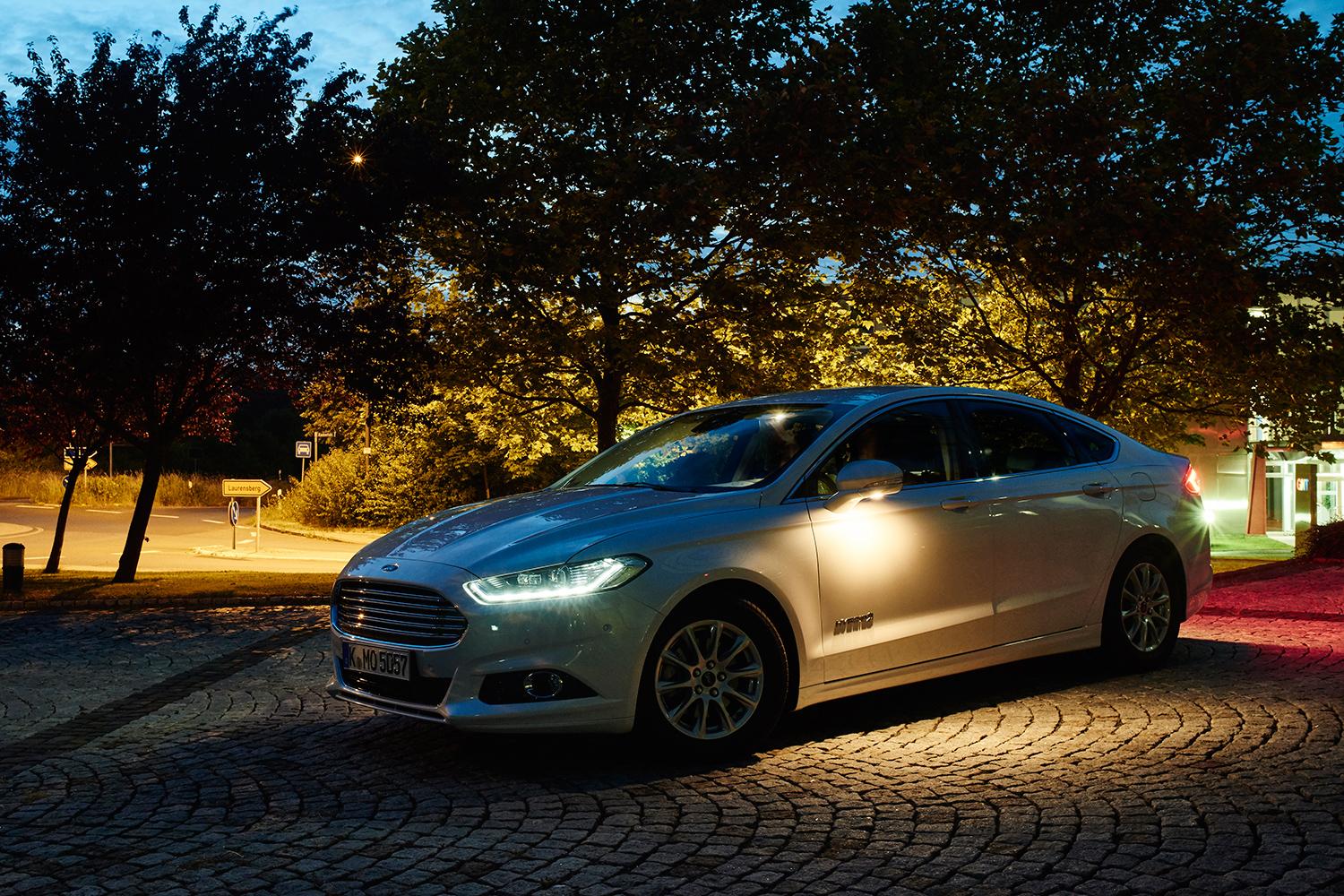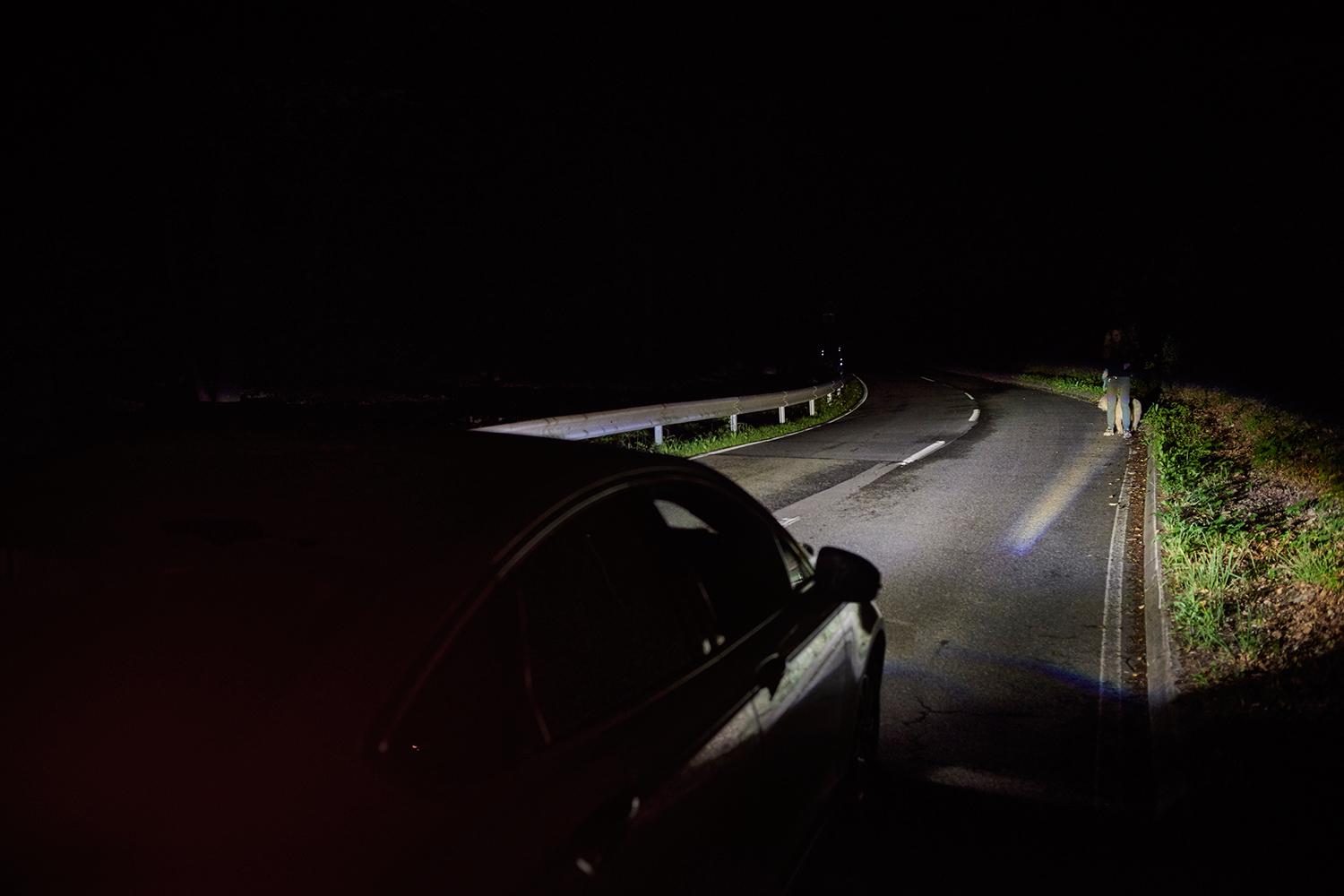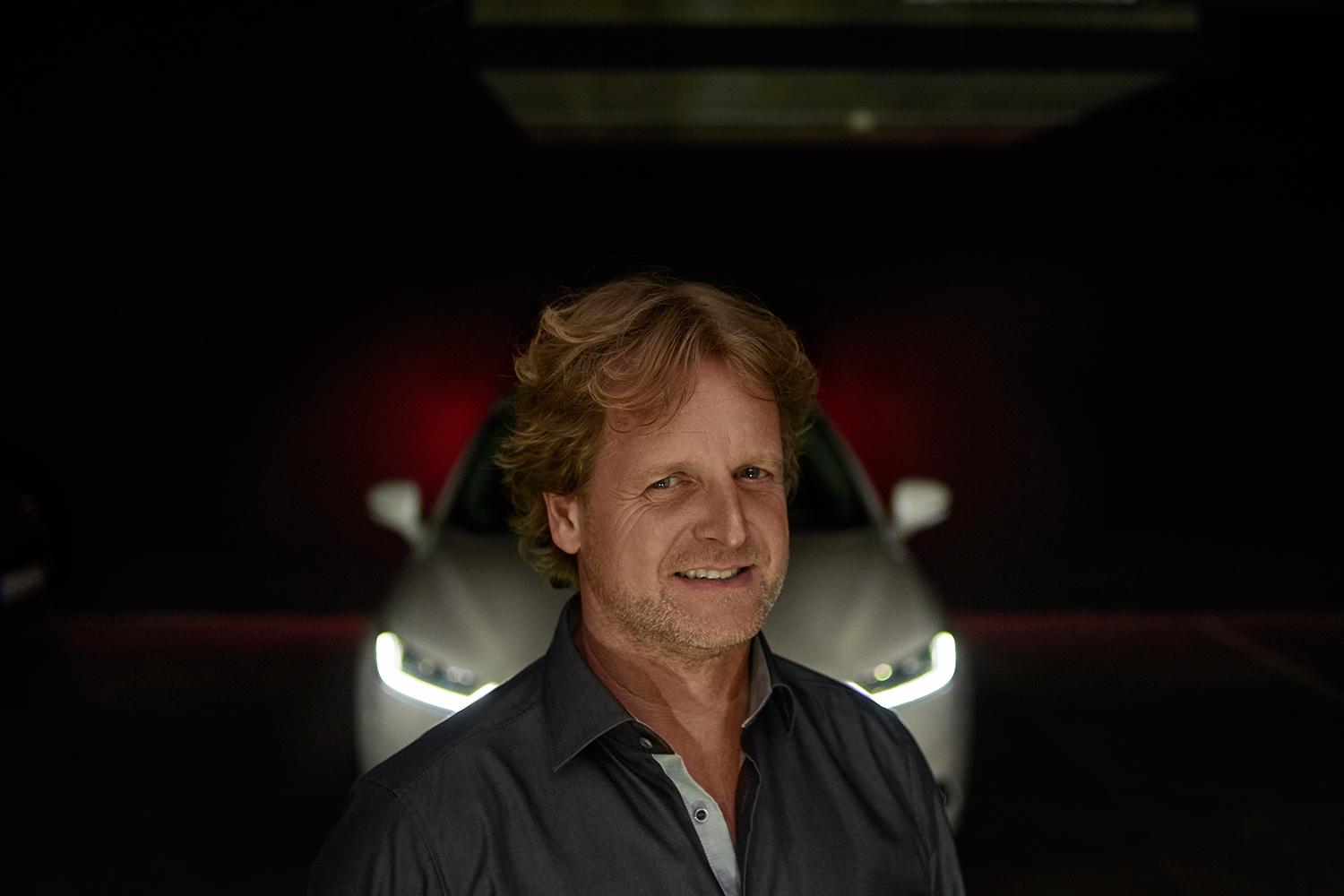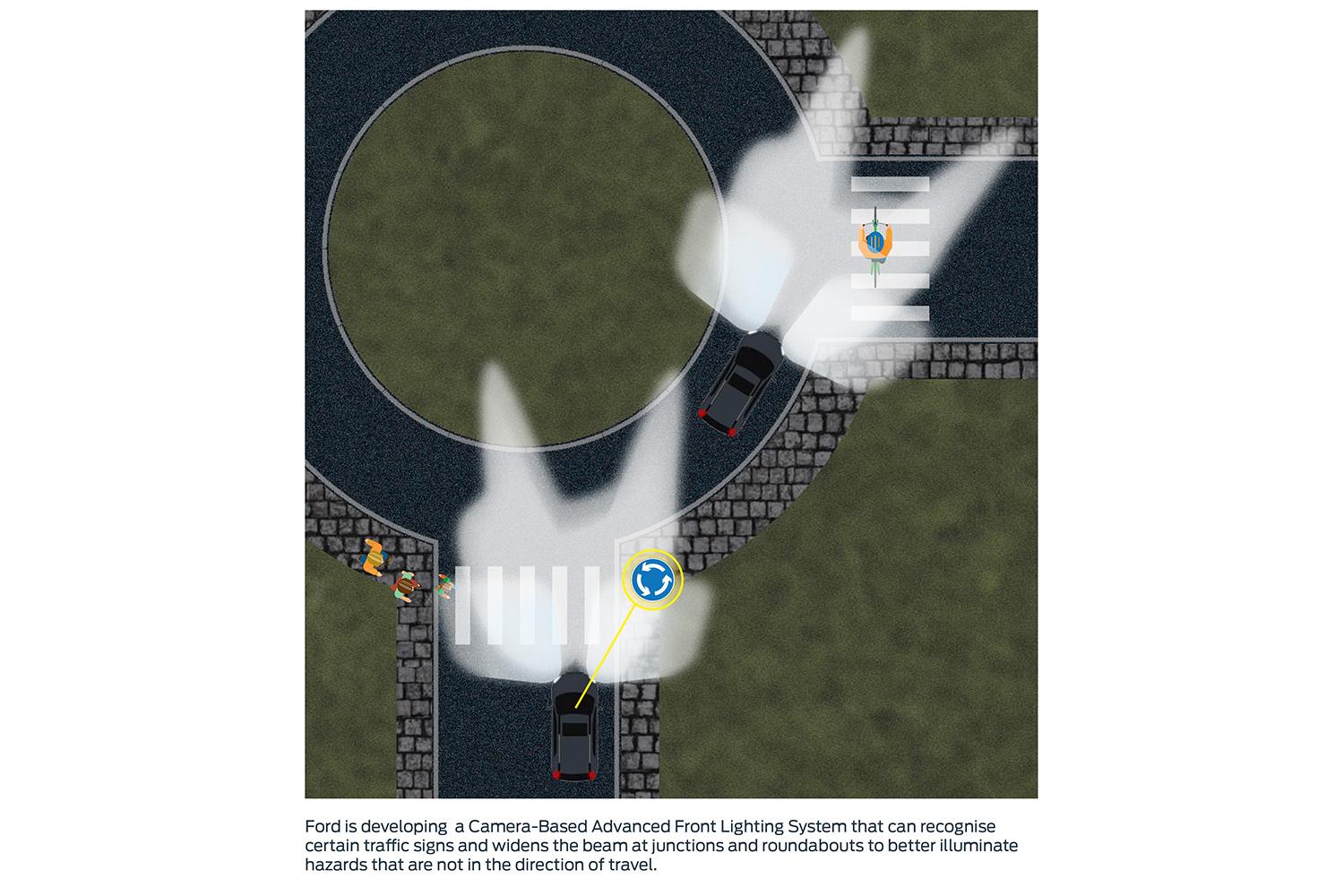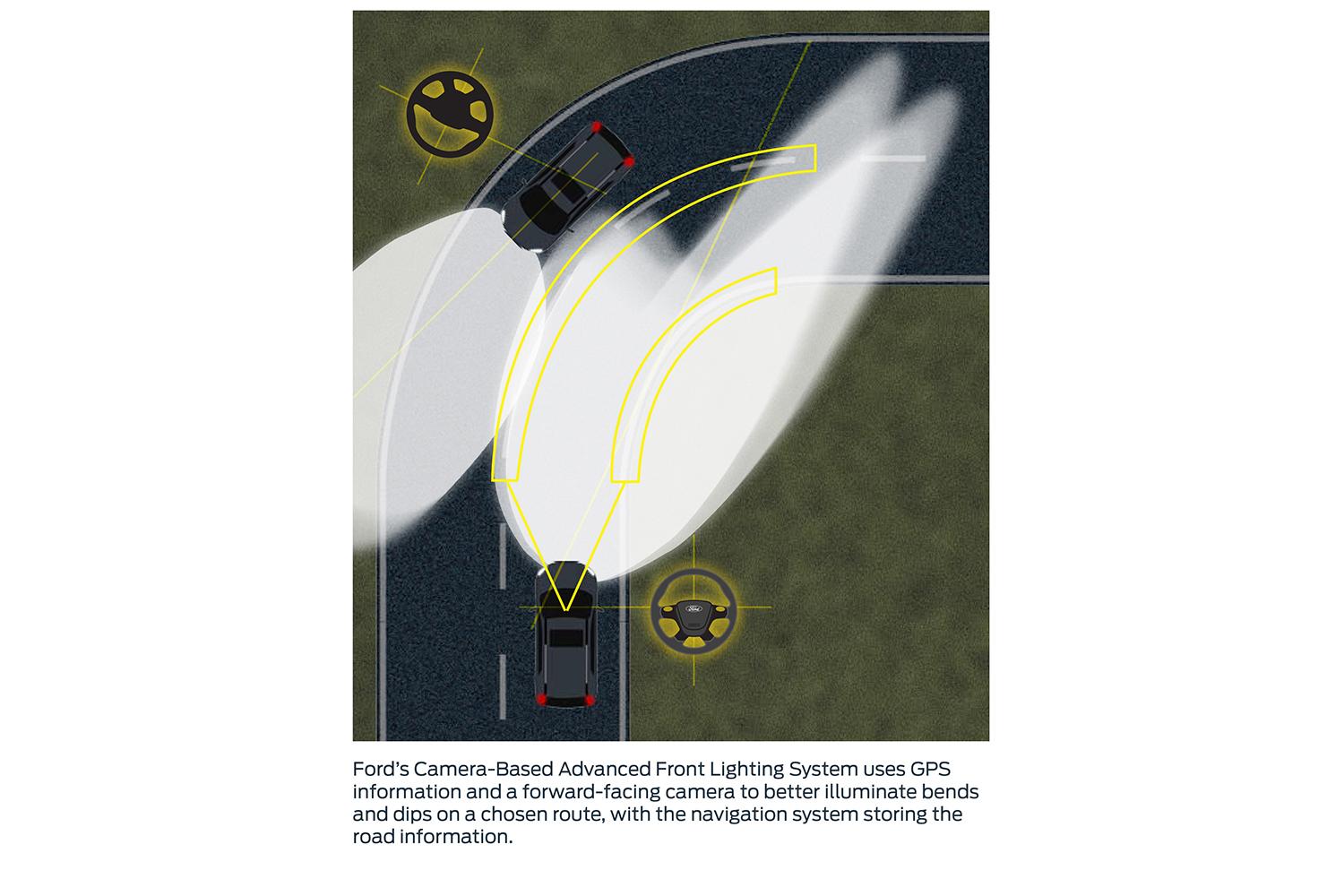Ford says it’s working on a prototype lighting system that can actually point out obstacles, and learn roads so it can adapt its lighting configuration for specific situations. Those are some smart headlights.
The carmaker’s “Camera-based Advanced Front Lighting System” can widen the beam at junctions, as well as use GPS information or a forward-facing camera to predict the curvature of a given road and adjust lighting accordingly. It can also spotlight hazards like pedestrians and animals.
At junctions, the system’s wider sweep better illuminates turn-offs and helps the driver more easily identify pedestrians that may be trying to cross the road, Ford says.
On the move, the spotlighting feature uses an infrared camera in the grille to locate and track up to eight people and/or larger animals at a range of up to 393 feet. It can spotlight two hazards, shining a spot and a stripe on the road surface with dedicated LED lamps next to the fog lights. The highlighted obstacles are also displayed on the car’s dashboard screen, marked with a red or yellow frame depending on distance.
The headlights can also adjust for a given road’s curvature using the aforementioned GPS and forward-facing camera, which is mounted in the base of the rearview mirror. Once the system has analyzed a given road, that information is stored in the navigation system and used again the next time that route is driven.
The system was developed at Ford’s European Research and Innovation Centre in Aachen, Germany, and is based on the Advanced Front Lighting System and Traffic Sign Recognition tech already available in European production cars.
Ford says it expects the technology to reach customers “in the near term.”
Editors' Recommendations
- Ford EV drivers can use 12,000 Tesla Superchargers starting in 2024
- Watch Ford testing its next-gen driver-assist tech on a mega road trip
- Ford’s Emoji Jacket for cyclists aims to foster harmony among road users
- Check out the electric Ford Mustang Mach E before you’re supposed to see it
- Ford Bronco R off-road racer shares DNA with upcoming production model
